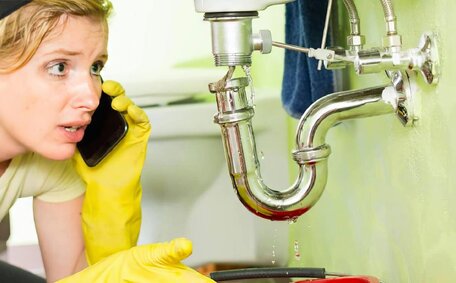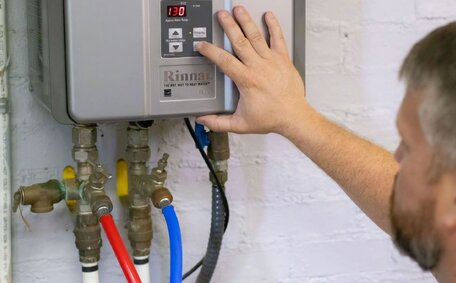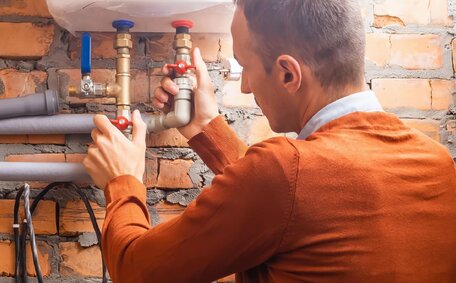Introduction to Pipe Relining
Pipe relining is an innovative, trenchless method for repairing damaged drain pipes. This internal pipe lining forms a smooth, jointless and corrosion-resistant surface that restores flow and performance.
It involves inserting a resin-coated liner into the existing pipe to essentially create a new pipe within the old one. Pipe relining is considered a fast, effective and convenient alternative to traditional pipe replacement methods that require extensive excavation.
The pipe relining process begins with an inspection to assess the condition of the pipes and locate any problem areas. A lining tube is then saturated with a thermosetting epoxy resin and pulled or inverted through the length of the pipe. A lining tube is then saturated with a thermosetting epoxy resin and pulled or inverted through the length of the pipe.
The next step is cleaning and preparing the pipes to ensure proper adhesion of the epoxy resin liner.
Once set, the epoxy resin liner is extremely durable, able to withstand corrosion and withstand the flow. Pipe relining restores pipes for decades, preventing further deterioration and eliminating the need for repeated repairs. Overall, it provides a cost-effective, long-term solution without the major disruption of digging up pipes and replacing entire sections.
Key benefits of pipe relining include:
- Minimal excavation and property damage
- Extremely fast repairs with no interruption to service
- Long lasting - 50+ year design life
- Prevents root intrusion
- Improved flow capacity
- No demotion or removal of pipes
- Cost effective compared to replacement
- Less waste and environmental impact
Pipe relining can be used to repair damaged drain, sewer and water supply pipes quickly and effectively. Contact a professional plumbing service to determine if pipe relining is the right solution for your pipe issues.
What is Pipe Relining?
Pipe relining is a trenchless method of repairing damaged pipes from the inside out. It involves inserting a resin-saturated liner into the deteriorated host pipe and curing it in place to form a new, jointless pipe lining.
Pipe relining is suitable for repairing cracks, leaks, root intrusion and corrosion in many types of pipes, including:
- Drain pipes
- Sewer lines
- Water pipes
- Gas lines
The process begins with a video inspection to identify damaged sections of pipe. The pipeline is then cleaned to prepare the surface. Next, a felt liner sock soaked in liquid epoxy resin is inserted into the damaged pipe through an access point.
As the resin-saturated liner is pulled through, it expands to fit the inner walls of the pipe. As the resin-saturated liner is pulled through, it expands to fit the inner walls of the pipe.
The liner is usually inflated with air pressure to hold it in place while the resin cures, which takes a few hours.
Pipe relining restores flow capacity, seals off leaks, and prevents further corrosion or root intrusion. It’s a cost-effective and convenient solution that can repair sections of pipe from 3 feet to over 300 feet in length. Relined pipes are structurally sound for decades, eliminating the need for invasive excavation and full pipe replacement.
How Does Pipe Relining Work?
Pipe relining is a multi-step process that plumbers use to repair damaged drain pipes without the need for excavation:
- Inspection - A camera is fed through the pipe to assess damage and measure the diameter and length of the damaged section.
- Cleaning - The existing pipe is cleaned using high-pressure water jets to prepare the surface.
- Lining insertion - A flexible felt lining tube saturated with epoxy resin is inserted into the damaged pipe through an access point.
- Curing - The lining is inflated with air pressure, forcing it to expand and bond to the pipe walls. The resin then cures and hardens, creating a smooth new inner pipe surface.
- Finishing - Once cured, the ends of the liner are trimmed off and any lateral connections are reinstated.
The result is a structurally sound, jointless new pipe able to withstand pressure and flow. The lining seals cracks and holes, preventing leaks and infiltration. Relined pipes have a typical design life of 50 years or more.
Pipe relining causes minimal surface disruption and can be completed quickly - usually within a day. It restores pipes to full functionality without the major excavation required for traditional replacement methods.
Pros and Cons of Pipe Relining
Pipe relining offers numerous advantages over traditional replacement methods, but also has some limitations to consider:
Pros:
- Significantly less invasive - requires just two excavation points versus digging up the entire line
- Much faster repairs - can be completed in hours or days rather than weeks
- Less expense - reduces labour and material costs by 50% or more
- Minimises property damage from digging
- No interruption to service or plumbing functionality
- Prevents future root intrusion
- Restores flow capacity and performance
- Environmentally friendly - reduces landfill waste
- 50+ year lifetime - a permanent solution
Cons:
- Not suitable for pipes with severe structural damage or complete collapses
- Limited to pipes 4 inches or larger in diameter
- May not work for pipes with multiple angles or bends
- Lateral connections need to be reinstated manually
Overall, pipe relining provides a fast, effective and non-invasive drain repair solution for the majority of scenarios. Contact a professional plumbing company to determine if it’s the right option for your particular pipe issues.
When to Choose Pipe Relining
Pipe relining is often the optimal solution when:
- Tree roots have invaded and damaged pipes
- Small sections of pipe are corroded or cracked
- Damage is limited to the interior of pipe walls
- Minimal excavation is desired to limit property disruption
Unlike full pipe replacement, relining requires access only to the pipe endpoints in order to insert the resin-saturated liner. This means pipes under walkways, driveways, gardens and other landscaped areas can often be relined with no excavation required.
Pipe relining can repair damaged sections ranging from 3 feet to over 300 feet in length. It is suitable for defects limited to the interior pipe surface, such as cracks, leaks and corrosion. However, if complete collapses or severe structural damage has occurred, replacement may be required.
The non-invasive nature of pipe relining makes it an excellent solution for properties where extensive excavation and restoration work needs to be avoided. Home and business owners can restore their plumbing with minimal disruption to landscaping or structures.
Contact a professional plumbing company to determine if your particular pipe damage makes you a good candidate for pipe relining instead of traditional replacement methods.
DIY vs Professional Pipe Relining
p>p>p>p>p>p>p>p>
Finding a Qualified Pipe Relining Company
When selecting a pipe relining company, it’s important to do your research to find a qualified, professional plumbing service. There are a few key factors to look for:
Industry Experience
Choose an established company with ample expertise in pipe relining specifically. Look for 5+ years in the business and confirmation that relining is one of their specialties.
Proper Licencing
Any plumbing company you consider should be fully licenced and insured for liability and workers compensation coverage.
Upfront Pricing
A reputable company will provide you with detailed upfront quotes rather than charging by the hour. This ensures you know the full costs ahead of time.
Quality Materials & Workmanship
Ask about the specific relining materials and technologies used. Look for durable epoxy resins, thickness guarantees and warranties on completed work.
Reviews, testimonials and company certifications can help verify a track record of quality. Leading companies like Ashfield Plumbing have a long list of satisfied customers to vouch for them.
Taking the time to carefully select your pipe relining provider helps ensure a successful, long-lasting pipe repair free of any issues down the line. Trust in their expertise for the best results.
Questions to Ask Potential Pipe Relining Companies
p>p>p>
Estimated Costs of Pipe Relining
The cost of pipe relining depends on several factors, including:
- Pipe material (clay, concrete, PVC etc.)
- Pipe diameter and length
- Type of pipe (sewer, drain etc.)
- Number of junctions or bends
- Accessibility of the pipes
- Location and local labour costs
As a general guideline, pipe relining typically costs $150 - $300 per linear foot depending on the pipe size, material and site conditions. Here are some approximate price ranges:
- 4" drain pipe - $170 to $250 per linear foot
- 6" sewer pipe - $200 to $350 per linear foot
- 8-12" sewer pipes - $250 to $450 per linear foot
Keep in mind that simpler, straight runs are generally cheaper to reline than pipes with difficult access, excessive corrosion, or many junctions. Obtain an accurate quote by having a professional plumbing company inspect your pipes.
While pipe relining has higher upfront costs than repairs like pipe patching, it provides a long-lasting solution that’s comparable to full replacement. When you factor in the costs of excavation, restoration and associated property damage for pipe replacement, relining is very cost-effective.
Conclusion and Next Steps
In summary, pipe relining provides a fast, effective and minimally invasive solution for restoring damaged drains and sewer pipes. By inserting an epoxy resin liner to coat the interior walls of the pipe, leaks, cracks, blockages and corrosion can be repaired without excavation or pipe replacement.
The pipe relining process causes minimal disruption to properties, is more environmentally friendly than traditional methods, and provides a long-lasting repair that seals out root intrusion. When faced with pipe damage, pipe relining should be considered as an optimal repair approach.
For anyone needing professional drain or sewer pipe repairs, contact the specialists at Ashfield Plumbing today. Get in touch via phone on XXX-XXX-XXXX or email [email protected] to schedule an on-site assessment.
With over 5 years experience providing high quality pipe relining in the Ashfield area, our team has the expertise to inspect your pipes and determine if relining is the right solution.






